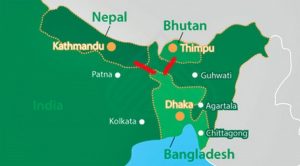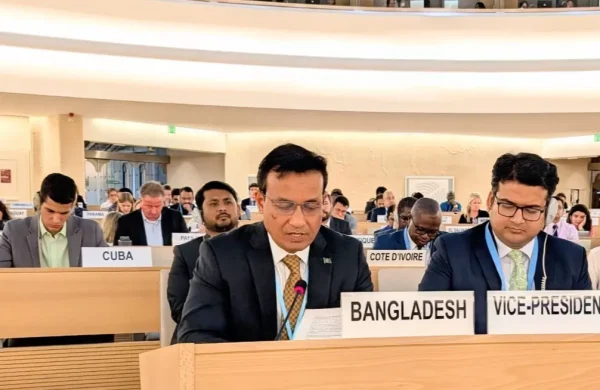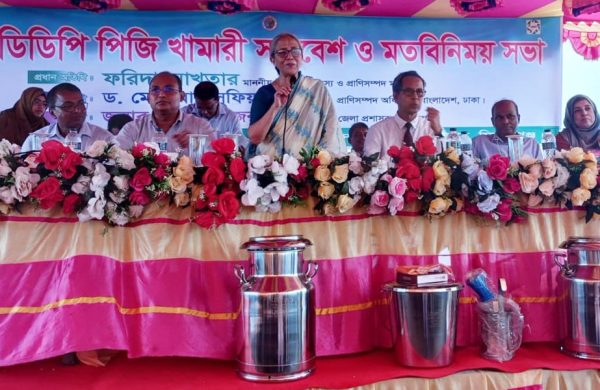Not only India, but BD can also travel Nepal-Bhutan using Indian railway
- Update Time : Thursday, June 27, 2024

TDS Desk:
Bangladesh Prime Minister Sheikh Hasina and Indian Prime Minister Narendra Modi made 13 announcements in a meeting held in Delhi on June 22 this month. This announcement’s no.1 is the launch of a new train service between Rajshahi and Kolkata, a new agreement on the Indian Rail Corridor. The important aspect of this agreement is to facilitate the movement of goods and passengers on 12 routes of the seven states known as the “Seven Sisters” from Kolkata, India, using the land of Bangladesh.

It is learned that through this rail transit agreement between Bangladesh and India, the railways of the country are being connected to the Trans Asian network. With this, India will be able to go to its own territory using the railways of Bangladesh. Besides, Bangladesh Railway can go to Nepal-Bhutan using Indian territory.
The proposed agreement envisages 12 routes that would facilitate connectivity from the Indian mainland to seven states known as the ‘Seven Sisters’ via Bangladesh. In this case, there was confusion about using Indian territory to go to Nepal-Bhutan.

Photo Collected
In such a situation, Railway Secretary Humayun Kabir and Bangladesh Railway Director General Sardar Shahadat Ali cleared the issue to the media on Wednesday (June 27).
“Nepal-Bhutan access through Indian railways is being opened for Bangladesh Railways through the new memorandum of understanding (MoU),” both of them told the media.
Nepal and Bhutan signed transit agreements with Bangladesh in 1976 and 1984 respectively. However, it was not very effective as Bangladeshi freight vehicles could not move using Indian territory. Now with the new agreement with India, there is a chance that the earlier agreements with Nepal and Bhutan will come into force.
NEW AGREEMENT ON INDIA-BANGLADESH RAIL CORRIDOR –
With the new agreement on the India-Bangladesh Rail Corridor, the train service between Rajshahi and Kolkata was announced again after 77 years, which will be the “fourth inter-country train” running between Bangladesh and India. Besides, the important aspect of this agreement is the facility for the movement of goods and passengers on 12 routes of the seven states known as ‘Seven Sisters’ from Kolkata, India using the land of Bangladesh.
The influential Indian newspaper The Telegraph has reported detailed news about the statement of the Indian Railways. According to their report, under the new plan, “there will be 14 sections of a total of 1,275 km long railway. Out of this, 861 km will be inside Bangladesh, 202 km in Nepal, and 212 km in the north-eastern region.
“New Delhi’s plans have been made easier by the Bangladesh Government’s decision to allow India to build railways inside the country,” the newspaper said.
According to railway sources, a total of 861 km in Bangladesh, 202.50 km in Nepal, and 212 km in North Bengal and North Eastern regions will be surveyed.
Due to this agreement with India, Bangladesh Railways will also be able to transport goods and passengers to Nepal using Indian soil.
As per the proposal, rail connectivity between India and Nepal would require the construction of 190 km of new railway line on the approved route Biratnagar-New Mal Junction section. Besides, a 12.5 km new railway line will be required to be constructed in the Galgalia-Bhadrapur-Kajoli Bazar section.
In the case of going to Bhutan, one can go to Hasimara station on the border of the country by using Indian Railways.
Communication expert and Bangladesh University of Engineering and Technology (BUET) Professor Shamsul Haque told the media that India’s desire to create a new area of communication by establishing a rail link through Bangladesh is actually an “open door” policy.
He said that the key to developing this relationship is to provide “opportunities for equality-based development based on fairness”.
“Some will move forward, some will go backward — development is not actually stable in this policy. Bangladesh is in an excellent geographical position for the development of regional relations. Our coastline created opportunities to trade with the outside world,” said Prof. Shamsul Haque.
Neighboring India’s Seven Sisters, Nepal or Bhutan do not have this opportunity. In that place, Bangladesh ‘can take advantage’ of its geographical position. Bangladesh’s communication infrastructure is ‘multidimensional’, he also said.
In response to a query on how Bangladesh will benefit from the transit agreement, Mostafizur Rahman, Honorary Fellow of CPD, said that Bangladesh should expand trade with Nepal-Bhutan to benefit from rail transit. As India is using our territory, let us also use Indian territory to take advantage of this opportunity.
In this regard, the Secretary of the Ministry of Railways, Humayun Kabir, told the media that while talking about BIMSTEC (Bay of Bengal Initiative for Multisectoral Technical and Economic Cooperation), Trans Asian Network and Bangladesh-Bhutan-India-Nepal sub-regional connectivity-BBIN — it is not possible to implement that network or route using “only one country route”.
“We are saying that during the implementation of the agreement, the Indian train will go from Gede station to Haldibari, Dalgaon via Darshana, Abdulpur, Chilahati. Later, on our request, we got permission to run the railway up to the Hasimara border in the Alipurduar district of West Bengal. This will bring us closer to the Bhutan border,” Humayun Kabir mentioned.
Among the 12 railways that have been taken up for inter-country connectivity with India, the Railways is eyeing the Biral-Radhikapur and Mogolhat-Gitaldaha routes.
“The railway will run through Biral-Radhikapur to India’s Jogbani. From there, the train will run to Biratnagar border of Nepal. Stones from Nepal are coming to Bangladesh with this route,” the railway secretary said. “If we can operate the freight rail on this route, then Bangladesh will earn more revenue. As per the agreement, we will be able to use the current railways of India.”
On the question of how the investment will be in establishing inter-country connections on 12 railways, Director General of Railways Sardar Shahadat Ali said that there will be “a committee of the two countries”. Now Standard Operating Procedure (SOP) has to be developed. A tariff plan should be done. The deal is just done, who will invest the money and how – these issues will come later.
He also said that there are “two types of policies of transit and transshipment” in the agreement. Now the committee will determine how the goods will go to Nepal and Bhutan, and how we will get the dividend. There is no word that any one country will benefit from it alone
















